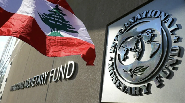
Geagea: LF Ministers to Reject Financial Regularization Law
This is Beirut 13:55

This is Beirut 13:55

This is Beirut 13:05

This is Beirut 22/12 14:40

Michael al-Andary 22/12 13:25

This is Beirut 21/12 16:00

This is Beirut 13:05

This is Beirut 22/12 17:10

This is Beirut 22/12 15:55

This is Beirut 21/12 19:50

This is Beirut 21/12 13:16
Lea Mehanna 21/12 17:00
LilianeMokbel 19/12 18:00
Liliane Mokbel 17/12 13:00
Hala Abdallah 16/12 17:25

This is Beirut 21/12 15:05

This is Beirut 21/12 12:05

Eleonore Stephan for Huna Lubnan 21/12 09:05

This is Beirut 20/12 18:05

This is Beirut 20/12 16:05

David Sahyoun 17/12 18:00

This is Beirut 17/12 14:15

This is Beirut 17/12 10:30

This is Beirut 15/12 12:25

This is Beirut 15/12 09:05

Makram Haddad 19/12 08:40

Makram Haddad 18/12 08:50

Makram Haddad 17/12 11:30

Makram Haddad 16/12 09:30

Makram Haddad 12/12 11:10

Bélinda Ibrahim 17/12 11:00

Makram Haddad 17/12 08:50

Bélinda Ibrahim 11/12 10:30

Bélinda Ibrahim 10/12 12:00

Bélinda Ibrahim 04/12 15:05